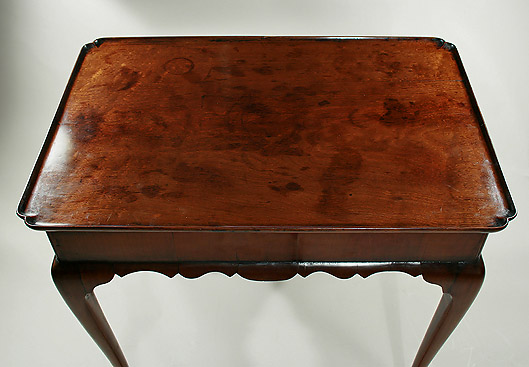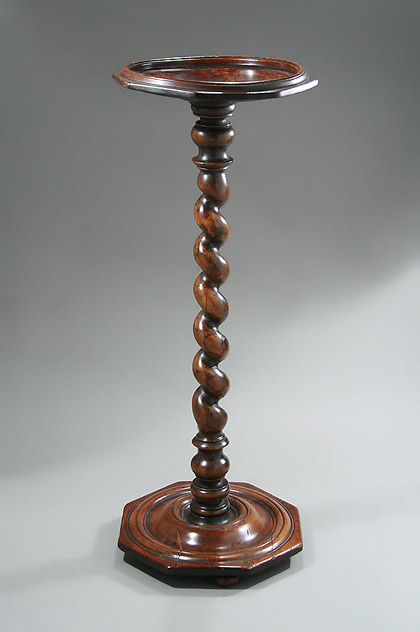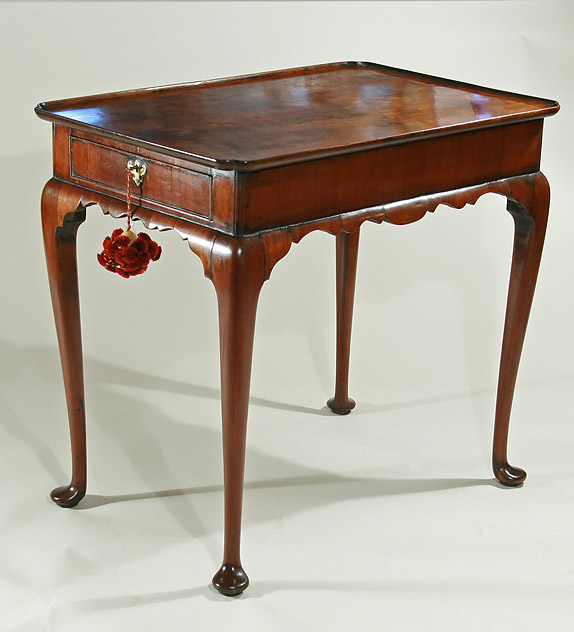|
M. FORD CREECH ANTIQUES & FINE ARTS
|
||
|
"A TALE OF TWO TOPS" :
Is it the best of tops, is it the worst of tops..... it was the table of hope, it was the table of despair...... is it going direct to Heaven, should it go direct the other way? (with apologies to Mr Dickens)
So which is it?
|
||
| Far too often, we see shoppers fall in love with an antique table or chest - then see the HISTORY OF ITS LIFE on the top. In this age of dermabrasion and collagen fillers, they quickly regard that history as a fault - then start talking about "refinishing", or what they can put on the top to hide the "flaw". What needs to be understood is sometimes what they are seeing is "PATINA". Israel Sack described patina as : "everything that happens to an object over the course of time. The nick in the leg of a table, a scratch on a table top, the loss of moisture in the paint, the crackling of a finish or a glaze in ceramics, the gentle wear patterns on the edge of a plate. All these things add up to create a softer look, subtle color changes, a character. Patina is built from all the effects, natural and man-made, that create a true antique."
|
||
|
Pictured left (above & below) is a 17th century English candlestand. Tables of this form were made between 1670 and 1690 as utilitarian furniture for the home - usually to hold lighting chair-side. So this top has held candles longer than we have had light bulbs. The burns and stains to the wood clearly depict its use over 300 years ago. They should not be removed or disguised. This is what "PATINA" is all about. (Note : due to their small size and usage, surviving candlestands are rare).
On the right is a c1750 Irish mahogany tea table, with a dished tray top of well figured mahogany and a rich old finish. The history from years of tea service still visible on the top. We watched with interest as many viewing this table (now sold) walked on....due purely to the stains on the top. This is how it should look . A tea table without stains has been stripped down and probably been sanded into the wood. An additional note : being from Ireland, it has already come from Heaven!
|
||
|
Charles II - William & Mary Walnut Candlestand England, c1670-1690 The solid walnut octagonal dished top over a bold spiral-twist and turned column, above a solid walnut octagonal and ringed base raised on three bun feet (SOLD) |
Irish George II Mahogany Tea Table Ireland, c1750 The rectangular mahogany dished tray top with re-entrant corners above a plain frieze with two end drawers and convex ruffled apron, raised on four cabriole legs ending pad feet, the top attached with multiple glue blocks (SOLD) |
|
|
Also see : (a selection of some of our favorite tops)
|
||
|
We welcome and encourage all inquiries. We will make every attempt to answer any questions you might have.
For information, call (901) 761-1163 or (901) 827-4668 Email : mfcreech@bellsouth.net or mfordcreech@gmail.com
American Express, Mastercard, Visa and Discover accepted
|
||
|
|
||
|
||



